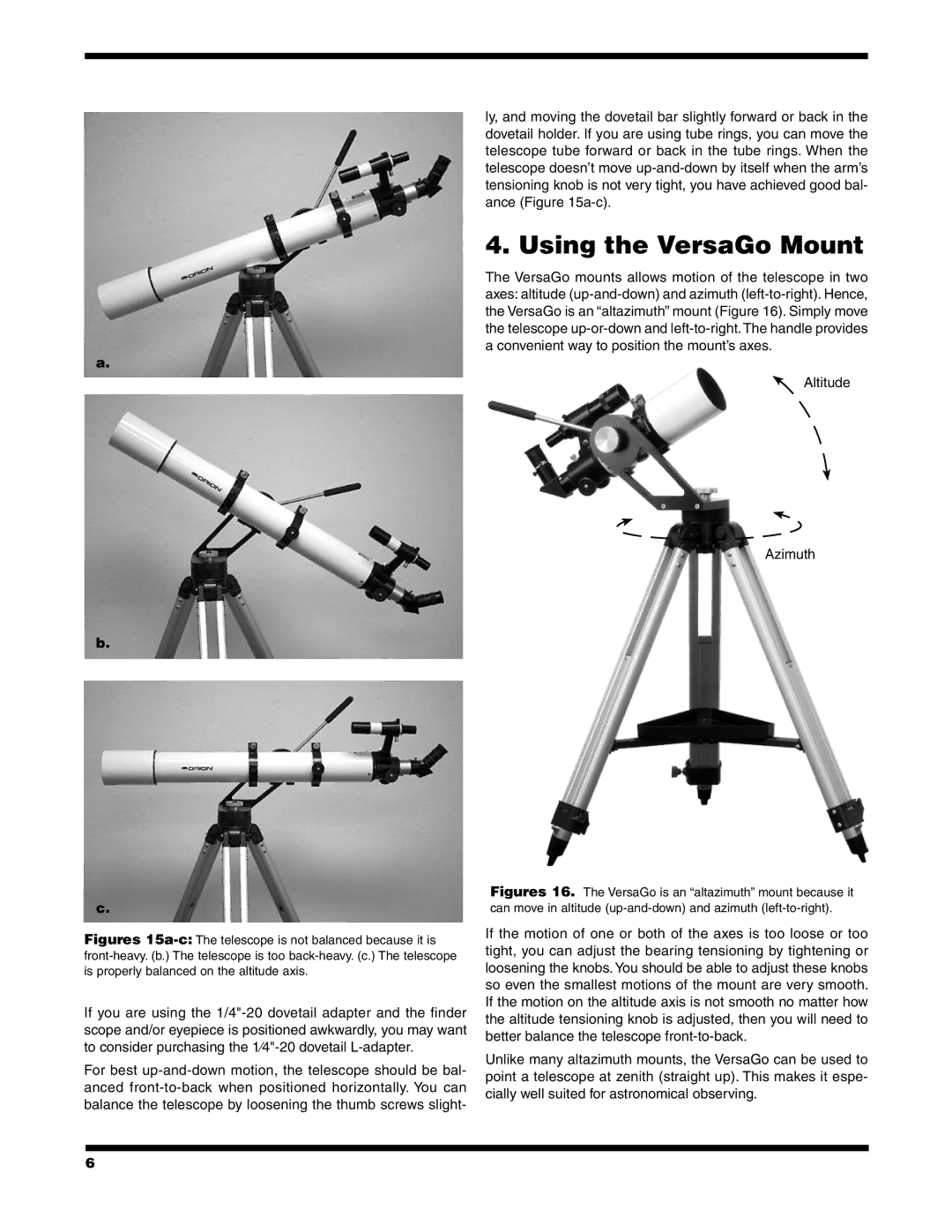
ly, and moving the dovetail bar slightly forward or back in the dovetail holder. If you are using tube rings, you can move the telescope tube forward or back in the tube rings. When the telescope doesn’t move
4. Using the VersaGo Mount
The VersaGo mounts allows motion of the telescope in two axes: altitude
a.
Altitude
Azimuth
b.
c.
Figures 15a-c: The telescope is not balanced because it is front-heavy. (b.) The telescope is too back-heavy. (c.) The telescope is properly balanced on the altitude axis.
If you are using the
For best
Figures 16. The VersaGo is an “altazimuth” mount because it can move in altitude (up-and-down) and azimuth (left-to-right).
If the motion of one or both of the axes is too loose or too tight, you can adjust the bearing tensioning by tightening or loosening the knobs. You should be able to adjust these knobs so even the smallest motions of the mount are very smooth. If the motion on the altitude axis is not smooth no matter how the altitude tensioning knob is adjusted, then you will need to better balance the telescope
Unlike many altazimuth mounts, the VersaGo can be used to point a telescope at zenith (straight up). This makes it espe- cially well suited for astronomical observing.
6
